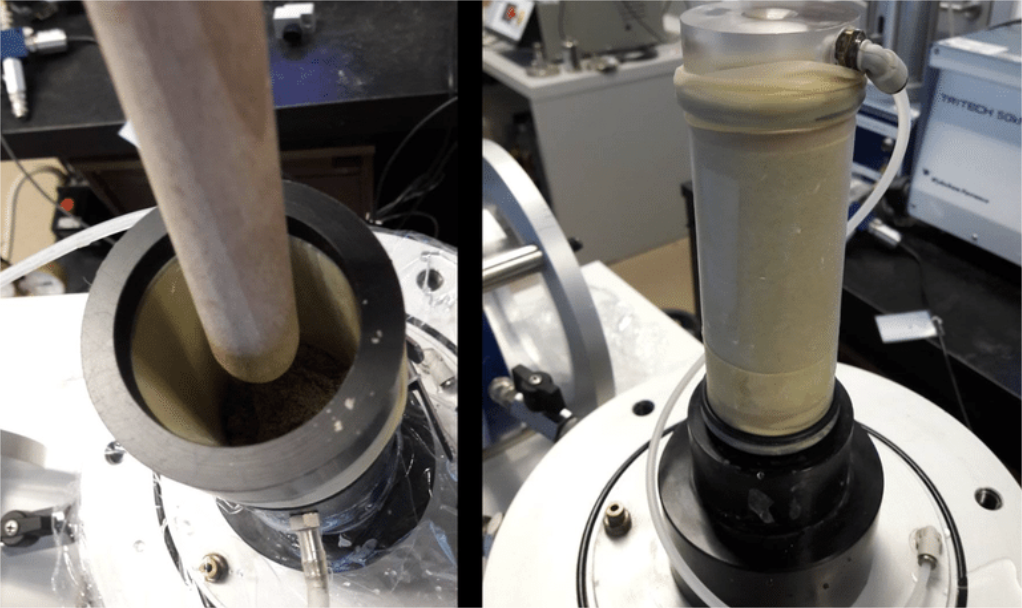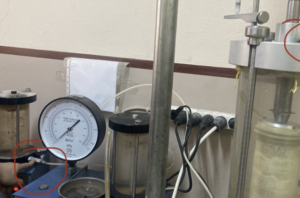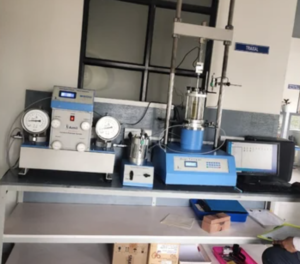What is the Triaxial Method?
The triaxial method is a widely used laboratory testing technique in geotechnical engineering that evaluates the strength, deformation, and stability of soils and rocks under controlled conditions. It provides crucial data for designing foundations, slopes, retaining walls, and underground structures. This article explores how the triaxial test works, its benefits, practical applications, and recent innovations.
How Does the Triaxial Test Work?
The triaxial test1 involves subjecting a cylindrical soil or rock sample to controlled stresses inside a sealed chamber. The process consists of the following steps:
- Sample Preparation: A soil specimen, typically 38–100 mm in diameter, is encased in a latex membrane to prevent water leakage.
- Confining Pressure Application ((\sigma_3)): The specimen is placed in a pressurized chamber where a uniform radial stress is applied using water or air.
- Axial Loading ((\sigma_1)): A vertical force is gradually applied through a loading piston until failure occurs.
- Pore Water Pressure Measurement: In some tests, sensors measure changes in pore water pressure2, which affects soil strength.
Types of Triaxial Tests
Triaxial testing is conducted in different modes based on drainage conditions:
| Test Type | Drainage Condition | Measured Strength Parameter | Application |
|---|---|---|---|
| Unconsolidated Undrained (UU) | No drainage | Undrained shear strength ((s_u)) | Short-term stability analysis |
| Consolidated Undrained (CU) | Drains before loading, but not during | Effective stress parameters ((c’), (\phi’)) | Slopes, embankments |
| Consolidated Drained (CD) | Full drainage allowed | Long-term drained strength | Foundations, retaining walls |
These variations allow engineers to simulate different real-world loading conditions and predict soil behavior accurately.
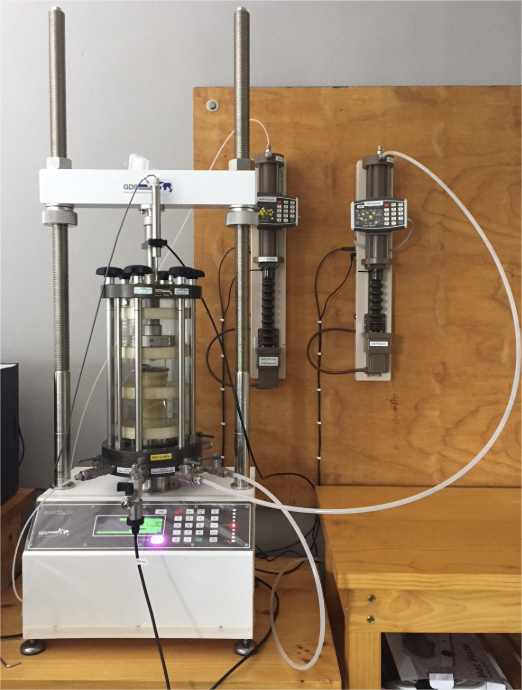
Key Benefits of the Triaxial Method
The triaxial method is widely preferred over other soil strength testing methods, such as the direct shear test, due to its accuracy and versatility. Some key advantages include:
- Controlled Stress Application3: Unlike the shear box test, the triaxial method applies stress in all three directions, closely mimicking in-situ conditions.
- Accurate Shear Strength Measurement: It provides both total and effective stress parameters for more reliable soil behavior predictions.
- Pore Pressure Monitoring: Essential for assessing liquefaction potential4 and slope stability under wet conditions5.
- Wide Range of Applications: Can be used for cohesive soils, granular materials, and even partially saturated samples.
Comparison: Triaxial Test vs. Shear Box Test
| Feature | Triaxial Test | Shear Box Test |
|---|---|---|
| Stress Condition | Controlled ((\sigma_1) & (\sigma_3)) | Single-plane shear |
| Measurement of Pore Pressure | Yes | No |
| Accuracy in Soil Strength | High | Moderate |
| Flexibility in Stress Paths | Yes | No |
| Suitability for Saturated Soils | Excellent | Limited |
The ability to analyze pore pressure and simulate complex stress conditions makes the triaxial test a superior method for engineering applications.
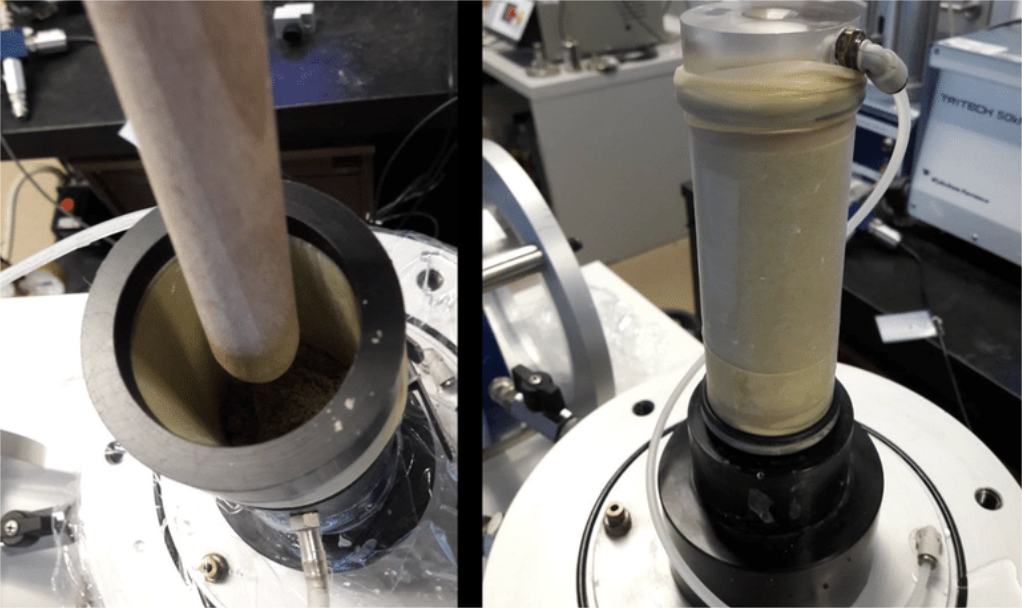
Practical Applications in Engineering
The triaxial test plays a crucial role in geotechnical engineering projects where soil strength and stability must be well understood. Some of the key applications include:
1. Foundation Design
- Determines bearing capacity and settlement characteristics of soils before construction.
- Helps engineers optimize foundation size and material selection.
2. Slope Stability and Landslide Prevention
- Used to analyze shear strength and effective stress conditions, which influence slope stability.
- Assists in designing retaining walls, embankments, and cut slopes.
3. Earthquake and Liquefaction Analysis
- Identifies liquefiable soils prone to sudden loss of strength during seismic activity.
- Helps in designing reinforced ground solutions for earthquake-prone regions.
4. Tunnel and Underground Construction
- Evaluates the stress-strain behavior of rock and soil under high confining pressures.
- Supports tunnel support system designs for underground excavations.
Example: Triaxial Test in Slope Stability Analysis
In a study of a highway embankment, triaxial tests determined that the underlying clay had a cohesion ((c)) of 25 kPa and friction angle ((\phi)) of 20°, requiring additional slope reinforcement. Without this data, improper design could have led to failure.

Innovations in Triaxial Testing
Advancements in triaxial testing technology are improving efficiency, accuracy, and real-time data analysis. Some of the latest innovations include:
- Automated Triaxial Testing Systems: Reduce human error and increase the speed of testing by automating stress control and data logging6.
- Digital Image Correlation (DIC) Techniques7: Use high-resolution cameras to track strain distribution across soil samples in real time.
- Machine Learning in Soil Behavior Prediction: AI models trained on triaxial test data improve the prediction of soil strength and deformation trends8.
- Micro-CT Scanning of Soil Samples: Provides 3D visualization of internal soil structure changes during testing.
Future Outlook
As geotechnical projects become more complex, integrating real-time data monitoring and AI-driven predictive modeling will further enhance the effectiveness of the triaxial method. These advancements will help engineers make more data-driven decisions, reducing construction risks and costs.
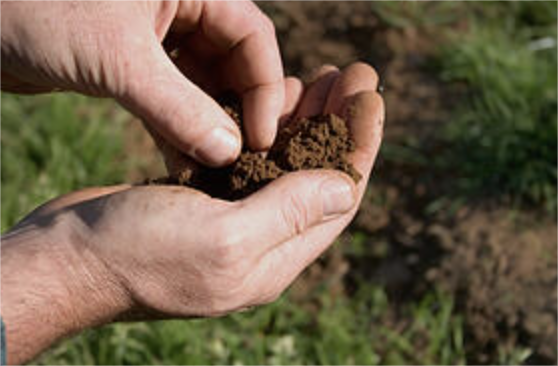
Conclusion
The triaxial method is a gold standard in geotechnical testing, offering precise control over stress conditions and producing reliable strength parameters for soil and rock materials. From foundation design to earthquake analysis, it is an indispensable tool for engineers. With continuous innovations, triaxial testing is evolving into a more efficient, automated, and predictive technology, shaping the future of soil mechanics and geotechnical engineering.
-
Understanding the triaxial test is crucial for geotechnical engineering, as it helps assess soil strength and behavior under stress. ↩
-
Exploring the impact of pore water pressure on soil strength can enhance your knowledge of soil mechanics and its applications. ↩
-
Learn about Controlled Stress Application to understand how it enhances soil testing accuracy and mimics real-world conditions. ↩
-
Understanding liquefaction potential is crucial for assessing soil stability during seismic events. Explore this link for in-depth insights. ↩
-
Slope stability is vital for safe construction practices. This resource will provide essential information on managing risks in wet conditions. ↩
-
Explore how automation enhances testing efficiency and accuracy, reducing human error significantly. ↩
-
Learn about DIC techniques that provide real-time strain analysis, enhancing the understanding of soil behavior. ↩
-
Discover the role of AI in predicting soil behavior, which can revolutionize geotechnical engineering practices. ↩

